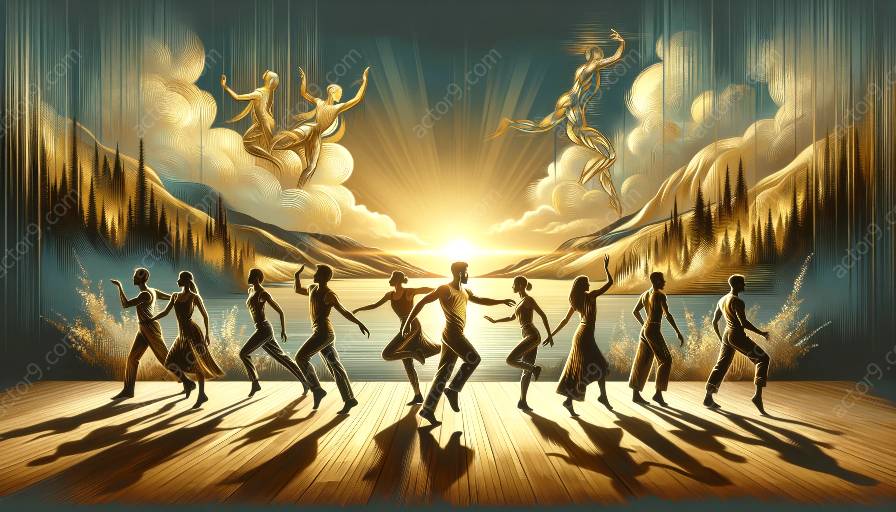Physical storytelling in theater has a rich history, dating back to ancient civilizations and evolving into sophisticated techniques utilized in modern performances. This article explores historical examples of physical storytelling, delving into the development of physical storytelling techniques and their connection to acting techniques.
Ancient Greek Theater
Ancient Greek theater provides one of the earliest examples of physical storytelling. Performances were held in amphitheaters, with actors utilizing physical movements and gestures to convey narratives to the audience. The use of masks and exaggerated movements allowed actors to communicate emotions and stories effectively, even in large outdoor venues. The physicality of Greek theater laid the foundation for future physical storytelling techniques.
Commedia dell'arte
During the Renaissance, Commedia dell'arte emerged as a popular form of physical storytelling in Italy. The performances featured stock characters and improvised scenarios, with actors relying on physical gestures, exaggerated facial expressions, and body language to convey humor and emotion. This form of theater laid the groundwork for the development of physical acting techniques, emphasizing the importance of gesture and movement in storytelling.
Kabuki Theater
In 17th-century Japan, Kabuki theater combined elaborate visual elements with stylized movements to create powerful narratives. Actors utilized precise gestures, dance, and martial arts techniques to bring stories to life on stage. The physicality of Kabuki performances became a defining characteristic of the art form and continues to influence physical storytelling techniques in contemporary theater.
Bauhaus Theater
The Bauhaus movement in early 20th-century Germany revolutionized theater through its emphasis on physical expression and non-verbal communication. Artists such as Oskar Schlemmer explored the relationship between space, movement, and storytelling, creating avant-garde theatrical performances that relied heavily on physicality. The Bauhaus approach to physical storytelling laid the groundwork for experimental and physically expressive theater practices.
Contemporary Physical Storytelling
Today, physical storytelling techniques continue to evolve, incorporating elements from historical examples while embracing new forms of expression. Physical theater companies and practitioners worldwide draw inspiration from historical forms of physical storytelling, blending them with modern acting techniques to create captivating performances that transcend language barriers and cultural differences.
By examining historical examples of physical storytelling in theater, we gain insight into the evolution of physical storytelling techniques and their enduring impact on the art of acting. The integration of physicality and storytelling remains a timeless and powerful aspect of theater, shaping the way stories are told and experienced by audiences.













































